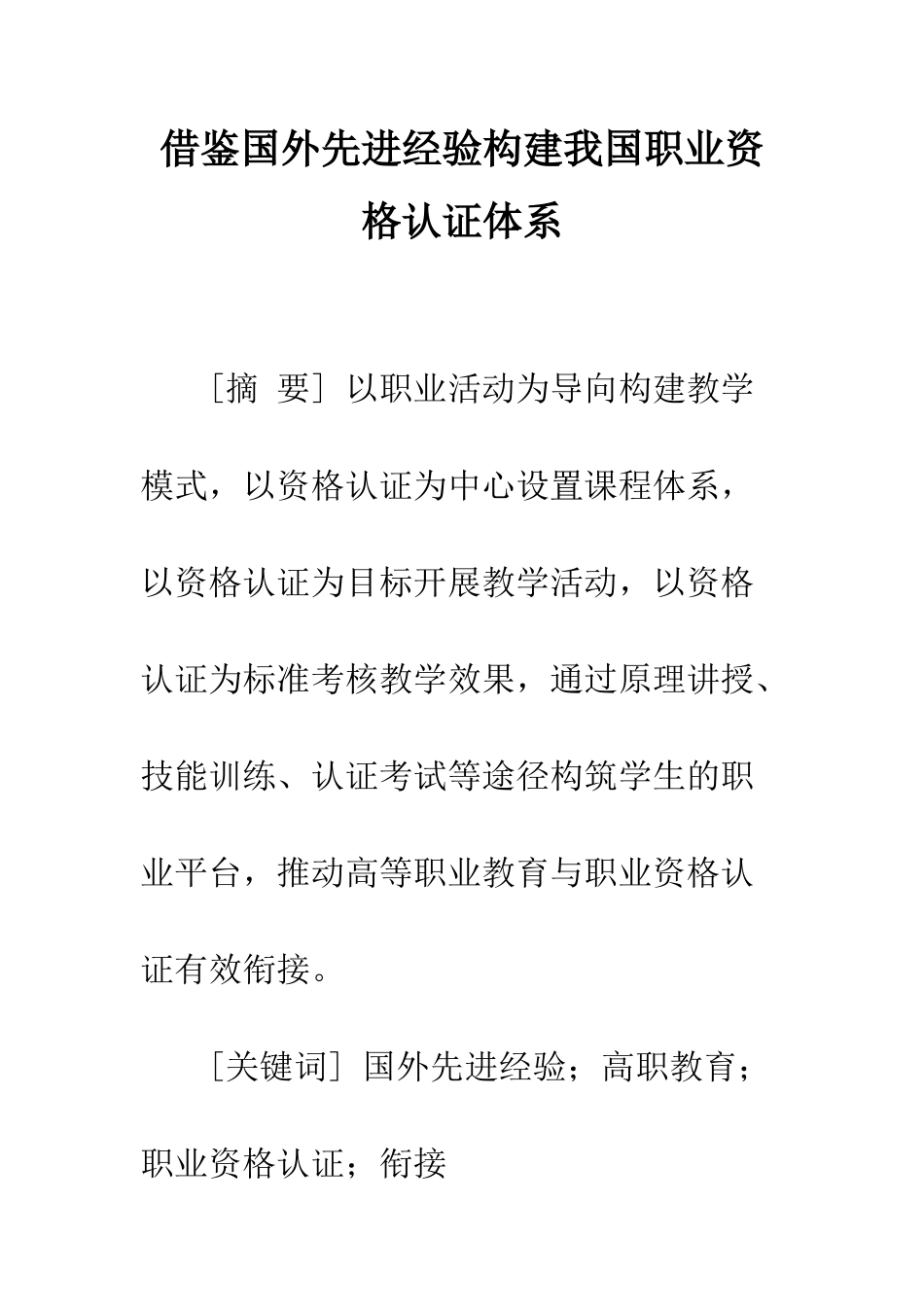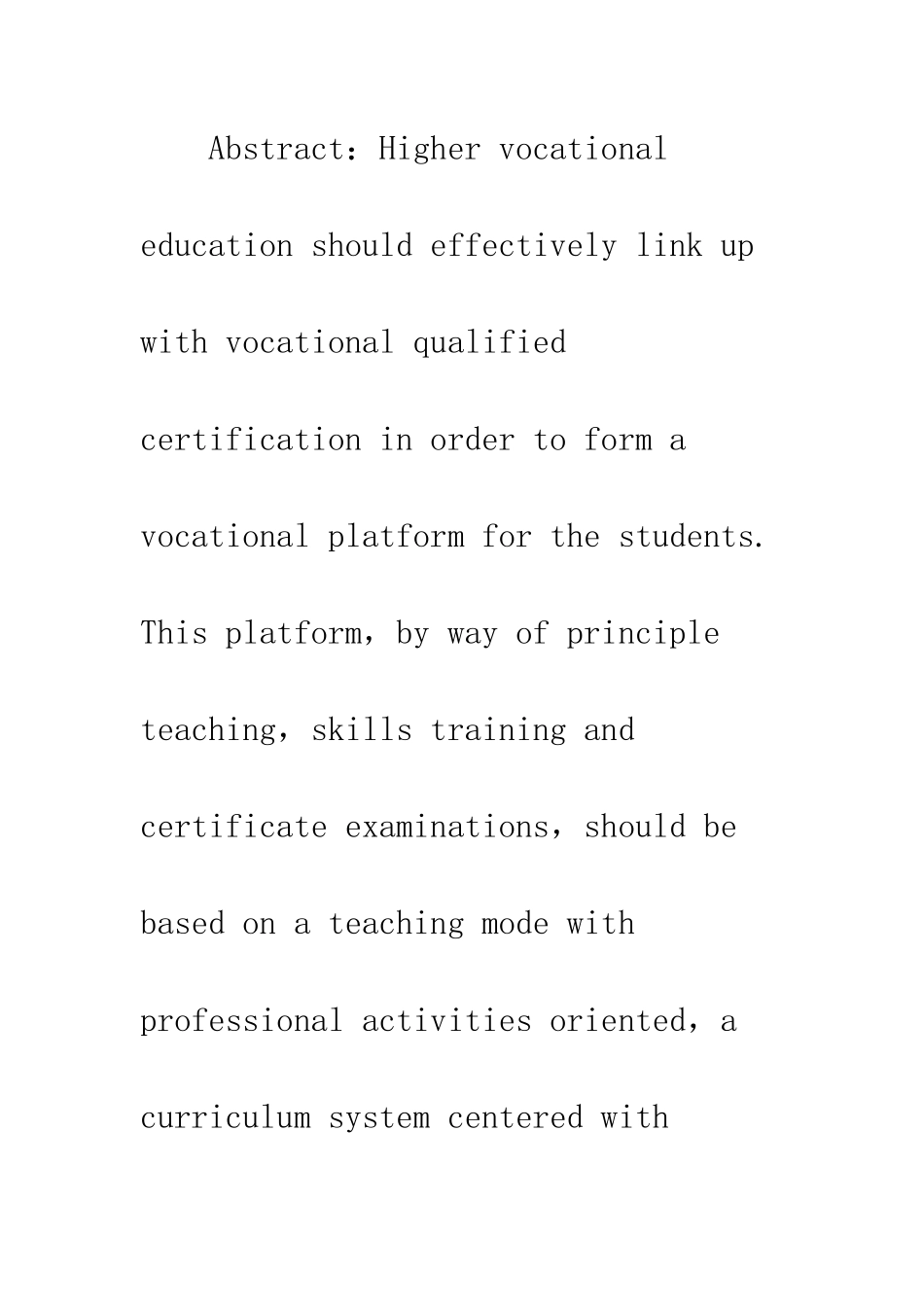借鉴国外先进经验构建我国职业资格认证体系 [摘 要] 以职业活动为导向构建教学模式,以资格认证为中心设置课程体系,以资格认证为目标开展教学活动,以资格认证为标准考核教学效果,通过原理讲授、技能训练、认证考试等途径构筑学生的职业平台,推动高等职业教育与职业资格认证有效衔接。 [关键词] 国外先进经验;高职教育;职业资格认证;衔接 Abstract:Higher vocational education should effectively link up with vocational qualified certification in order to form a vocational platform for the students. This platform,by way of principle teaching,skills training and certificate examinations,should be based on a teaching mode with professional activities oriented,a curriculum system centered with qualified certification,teaching activities objected to qualified certification and an evaluation of teaching effectiveness with the standard of qualified certification. Key words:foreign advanced experience;higher vocational education;vocational qualified certification;connection 我国职业教育进展迅速,而其人才质量重要的评价体系——职业资格认证制却尚未形成,以致职业教育中职业资格证书与课程、学历证书无法有效互换,学校与学生盲目考证,职业资格证书无法与就业准入相衔接,不能形成教学与就业有机结合,导致企业界选用人才没有有效的职业衡量标准。改变当前这种现状,构建基于职业教育的职业资格认证制是行之有效的办法。 一、我国职业资格认证概况 我国自 1993 年推行职业资格证书制度以来,已初步建立起职业资格证书制度的法律法规和工作体系。职业资格证书制度是劳动就业制度的一项重要内容,也是一种特别形式的国家考试制度,它是指根据国家制定的职业技能标准和任职资格条件,通过政府认定的考核鉴定机构对劳动者的技能水平或职业资格进行客观公正、科学法律规范的评价和鉴定,对合格者授予相应的职业资格证书。 我国国家职业资格证书实行等级式结构,分为五个等级:即初级 (国家职业资格五级)、中级(国家职业资格四级)、高级(国家职业资格三级)、技师(国家职业资格二级)、高级技师(国家职业资格一级)[1]。可见,职业资格证书是表明劳动者具有从事某一职业所必备的学识和技能的证明...


